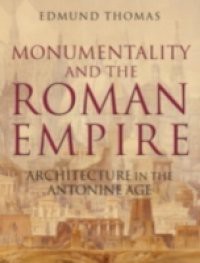The quality of 'monumentality' is attributed to the buildings of few historical epochs or cultures more frequently or consistently than to those of the Roman Empire. It is this quality that has helped to make them enduring models for builders of later periods. This extensively illustrated book, the first full-length study of the concept of monumentality in Classical Antiquity, asks what it is that the notion encompasses and how significant it was for the Romansthemselves in moulding their individual or collective aspirations and identities. Although no single word existed in antiquity for the qualities that modern authors regard as making up that term, its Latin derivation - from monumentum, 'a monument' - attests plainly to the presence of the concept inthe mentalities of ancient Romans, and the development of that notion through the Roman era laid the foundation for the classical ideal of monumentality, which reached a height in early modern Europe. This book is also the first full-length study of architecture in the Antonine Age - when it is generally agreed the Roman Empire was at its height. By exploring the public architecture of Roman Italy and both Western and Eastern provinces of the Roman Empire from the point of view of thebenefactors who funded such buildings, the architects who designed them, and the public who used and experienced them, Edmund Thomas analyses the reasons why Roman builders sought to construct monumental buildings and uncovers the close link between architectural monumentality and the identity and ideologyof the Roman Empire itself.



 6.36 (14)
6.36 (14) 














